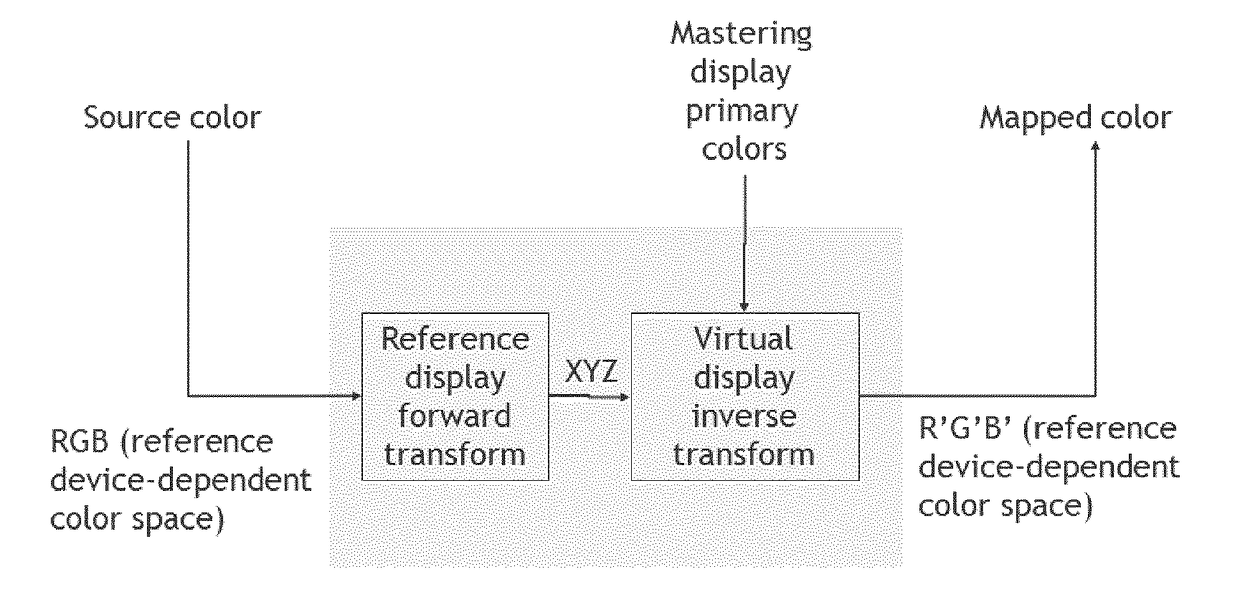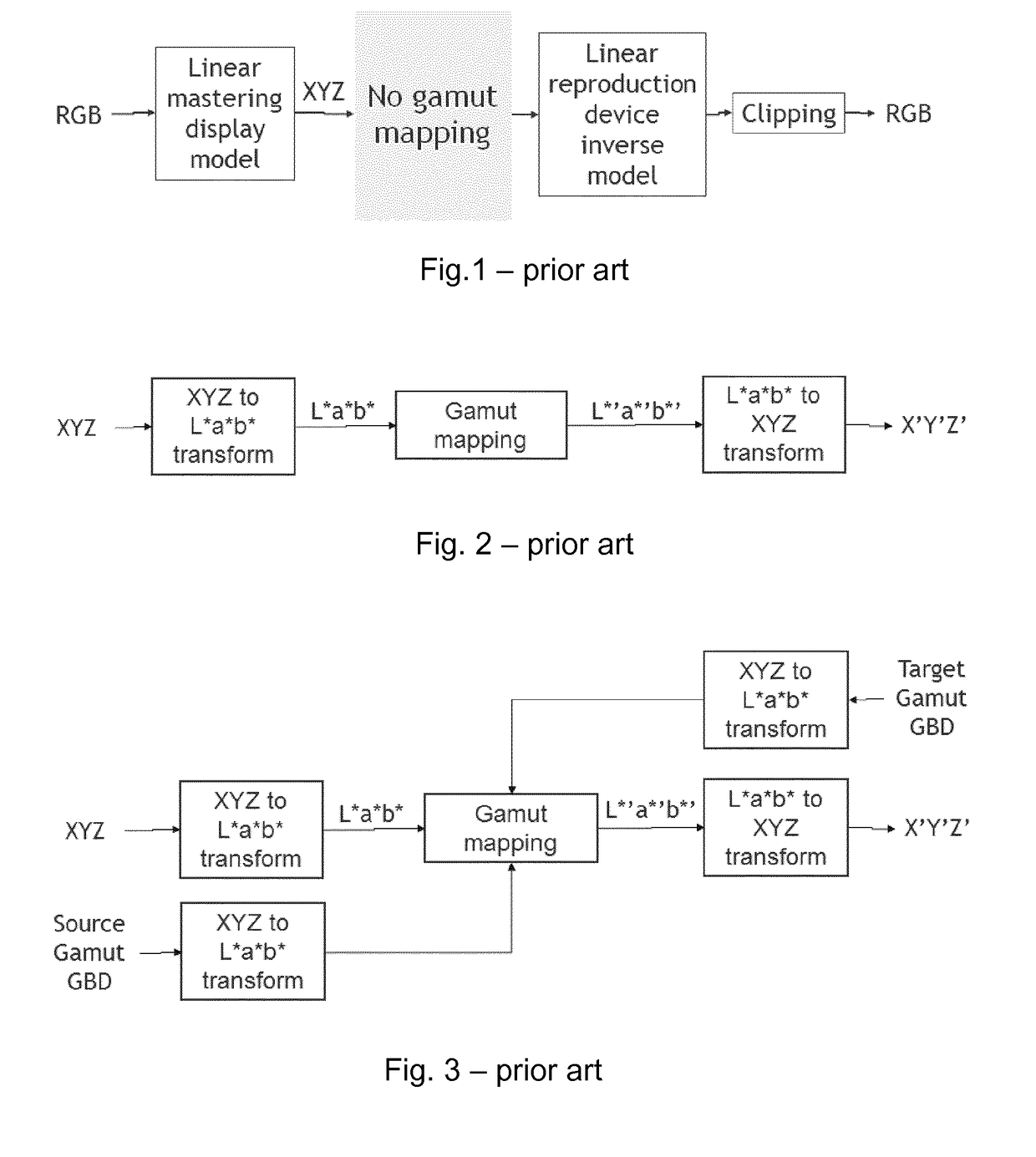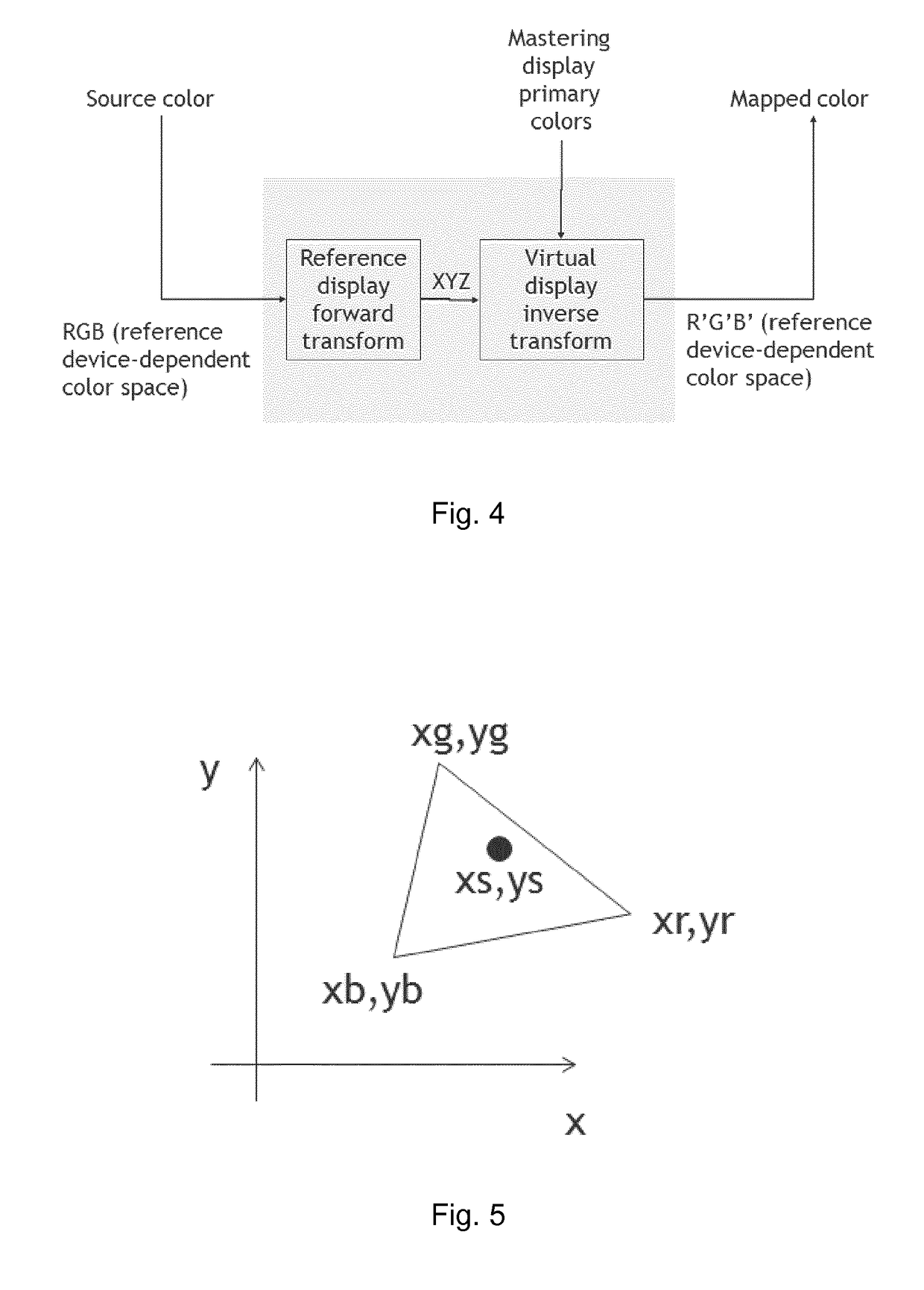Method of mapping source colors of a source content
a source content and color gamut technology, applied in the field of color gamut mapping, can solve the problems of not being able to reproduce the mastering display device, the color space was shown to not well represent all hues, and the color space was not well represented by the color space, etc., to achieve the effect of affecting the intensity and contrast of colors and the overall contras
- Summary
- Abstract
- Description
- Claims
- Application Information
AI Technical Summary
Benefits of technology
Problems solved by technology
Method used
Image
Examples
Embodiment Construction
[0104]It will be appreciated by those skilled in the art that block diagrams and the like presented herein represent conceptual views of illustrative circuitry embodying the invention. They may be substantially represented in computer readable media and so executed by a computer or processor, whether or not such computer or processor is explicitly shown.
[0105]The functions of the various elements shown in the figures may be provided through the use of dedicated hardware as well as hardware capable of executing software in association with appropriate software.
[0106]A source content is provided but is formatted to be reproduced by a reference display device, for instance as standardized according to ITU-R BT.2020, i.e. based on a wide color gamut. This source content has been mastered on a given mastering display device, notably characterized by given color primaries.
[0107]We will now describe how such source colors could be advantageously mapped into mapped colors adapted to be repr...
PUM
 Login to View More
Login to View More Abstract
Description
Claims
Application Information
 Login to View More
Login to View More - R&D
- Intellectual Property
- Life Sciences
- Materials
- Tech Scout
- Unparalleled Data Quality
- Higher Quality Content
- 60% Fewer Hallucinations
Browse by: Latest US Patents, China's latest patents, Technical Efficacy Thesaurus, Application Domain, Technology Topic, Popular Technical Reports.
© 2025 PatSnap. All rights reserved.Legal|Privacy policy|Modern Slavery Act Transparency Statement|Sitemap|About US| Contact US: help@patsnap.com



